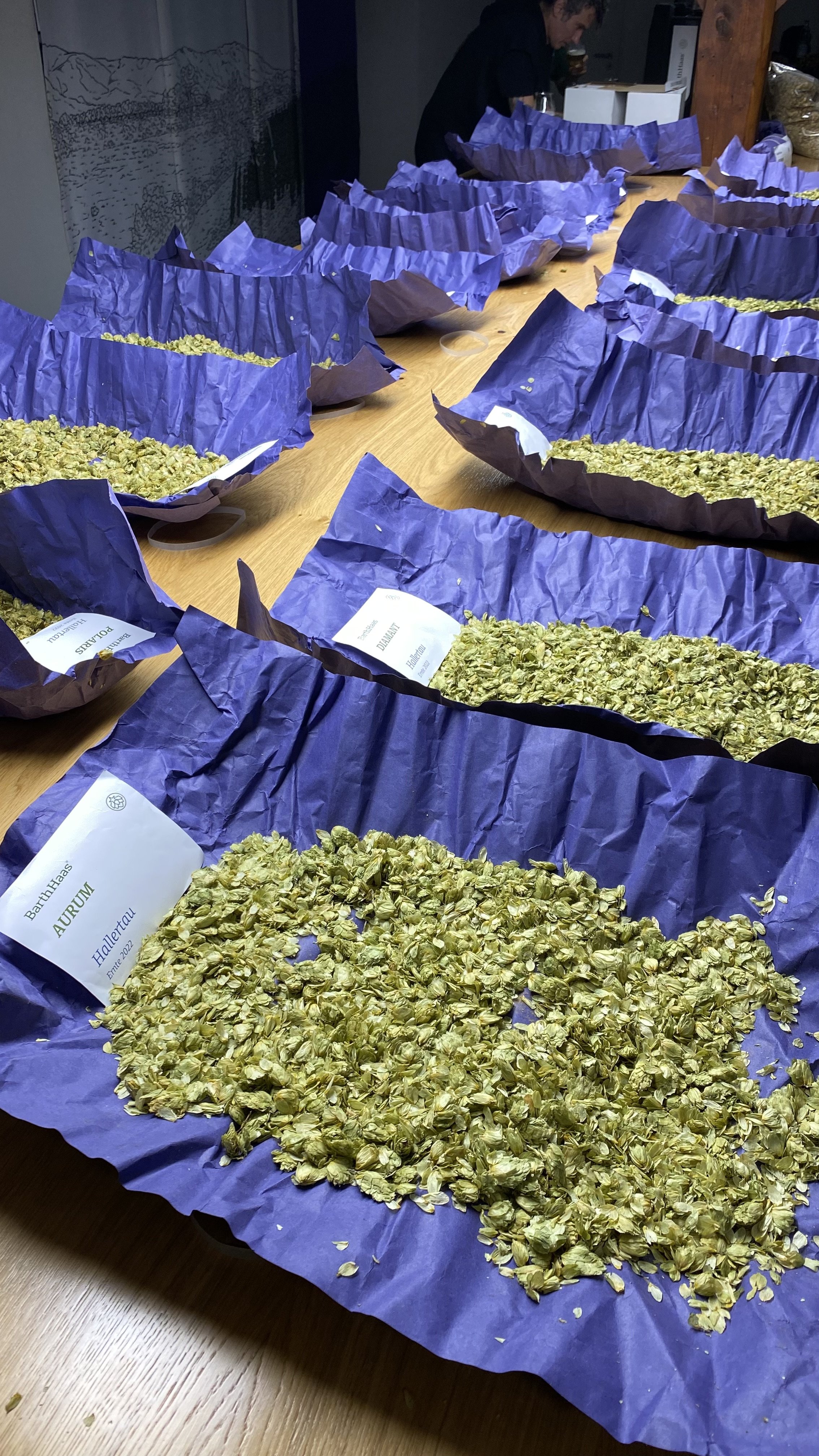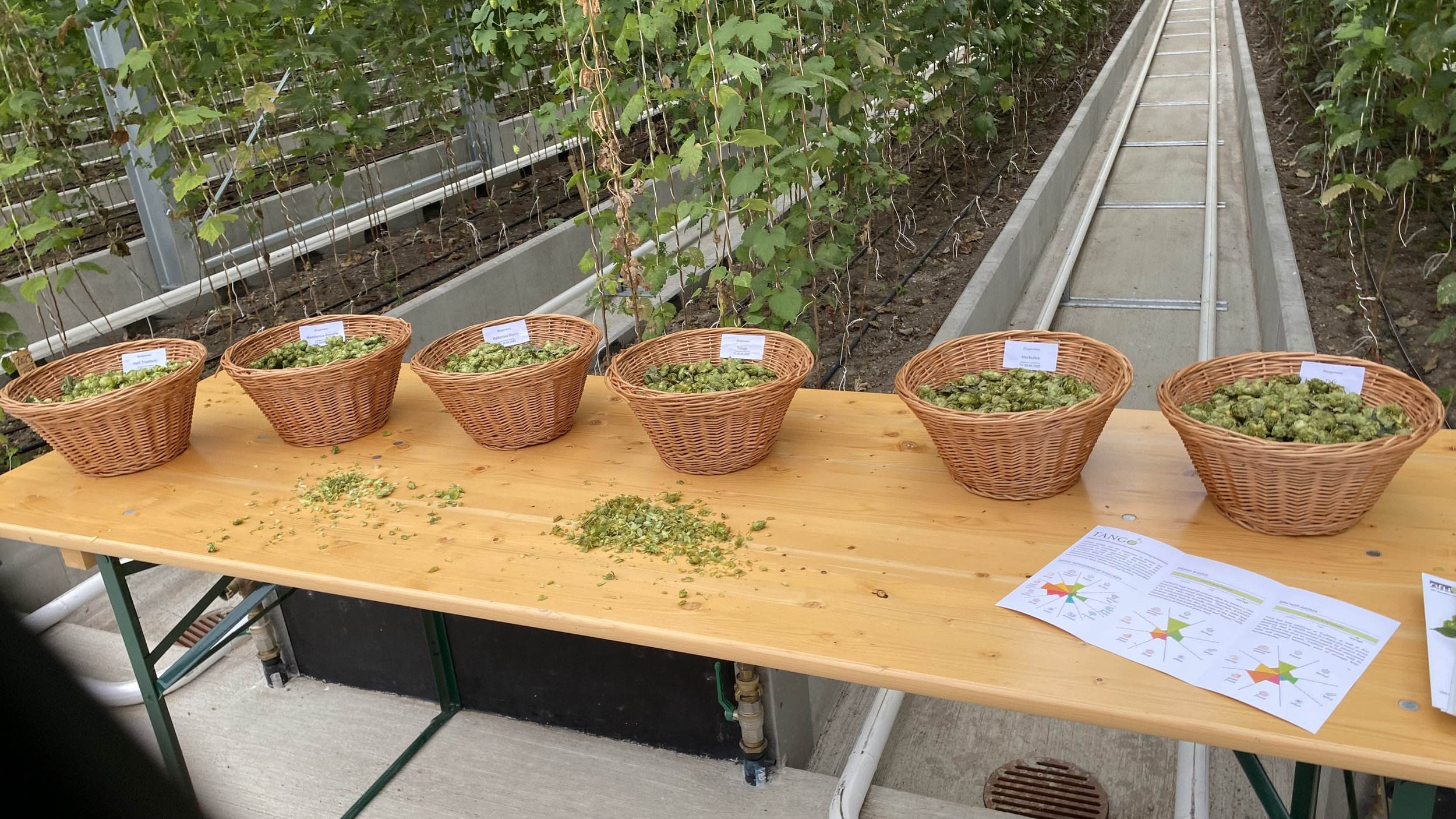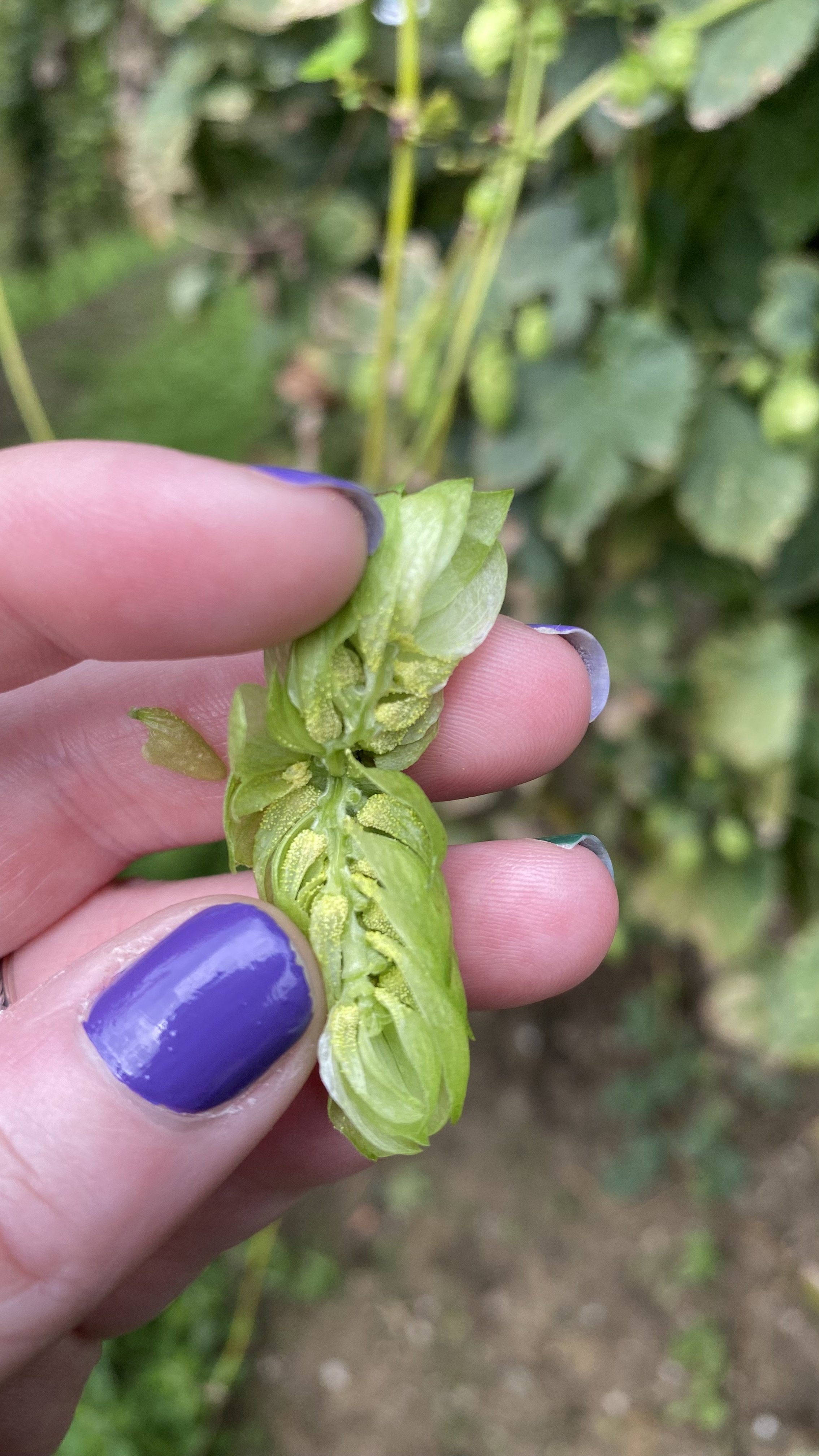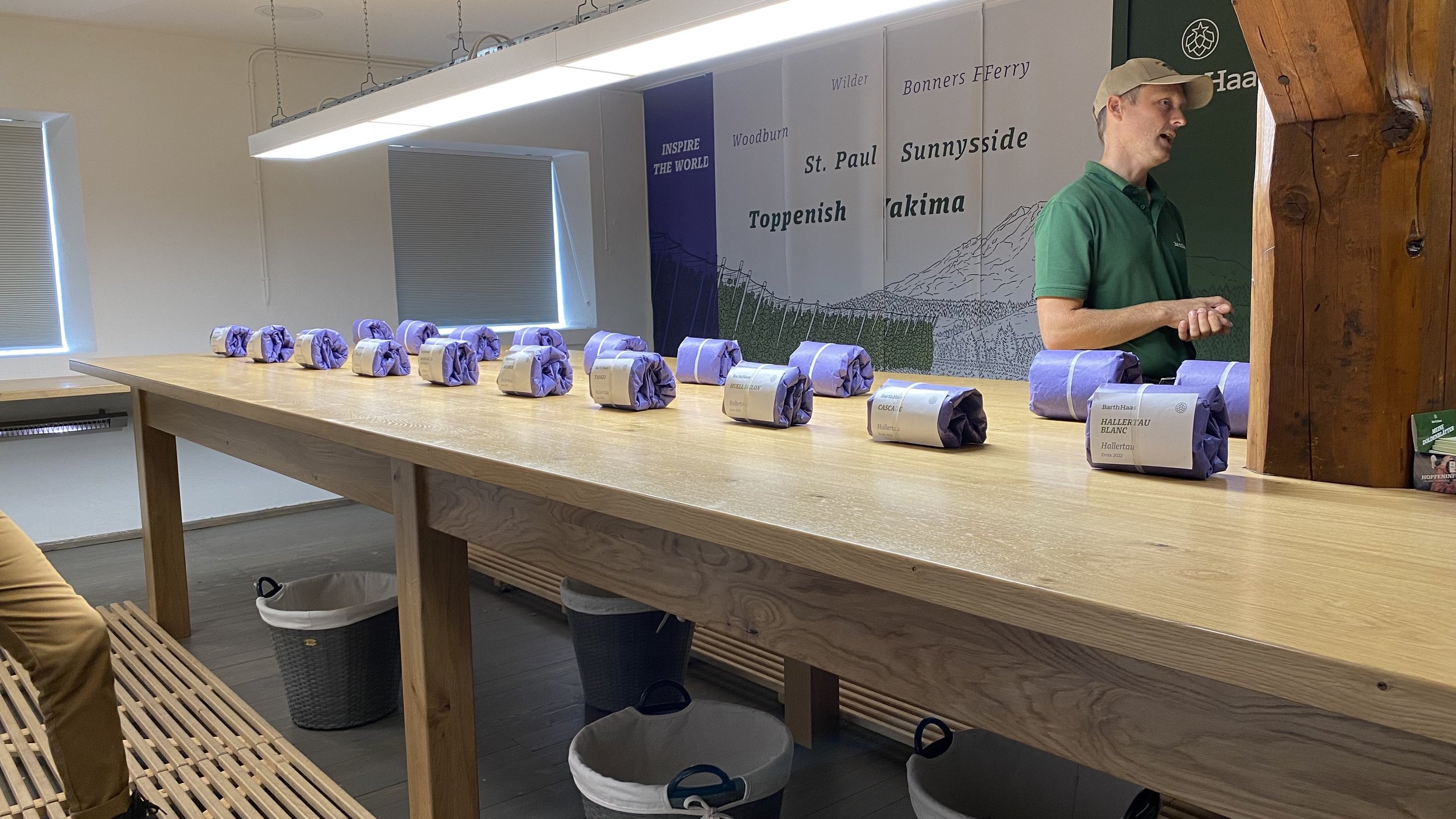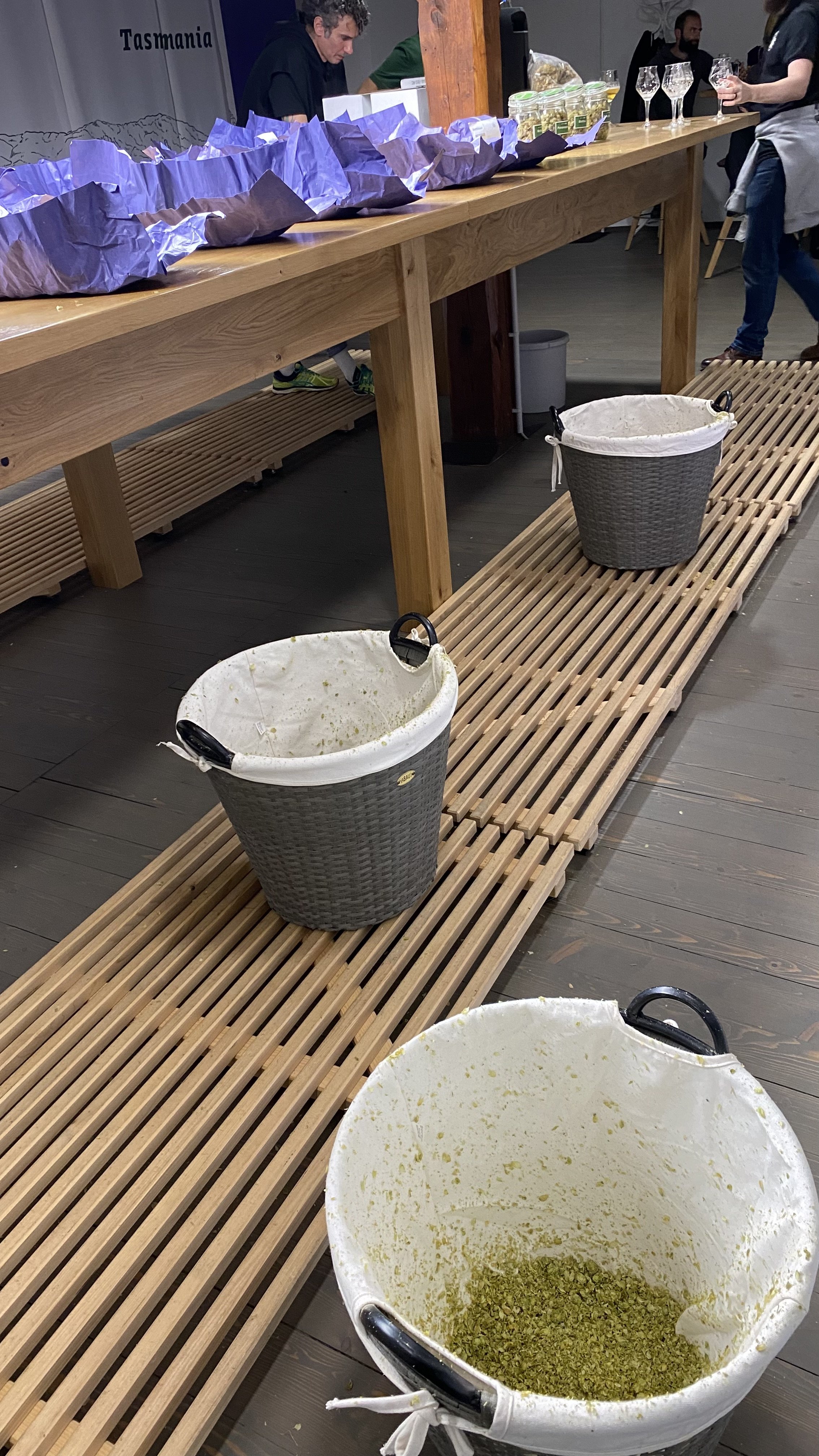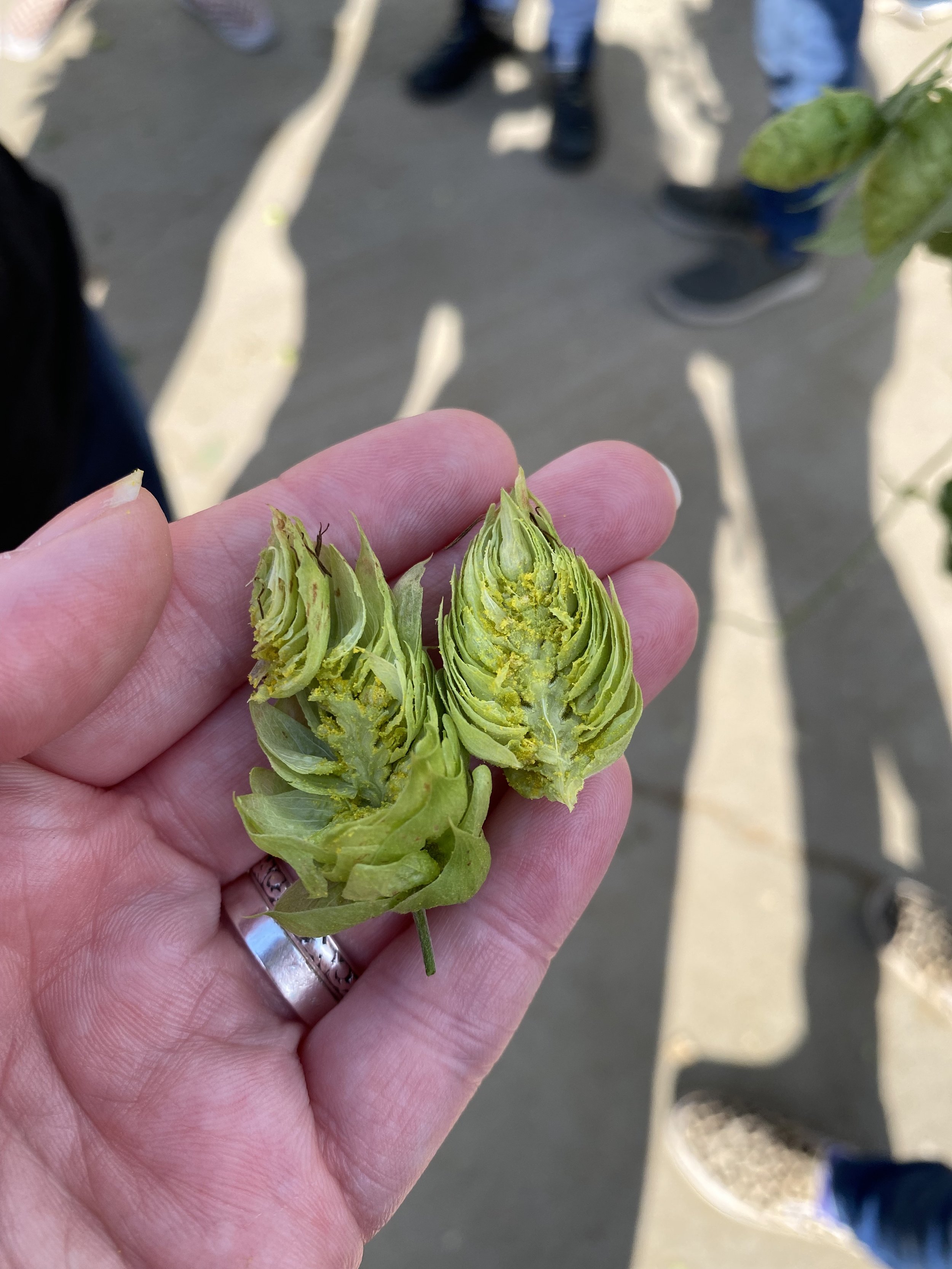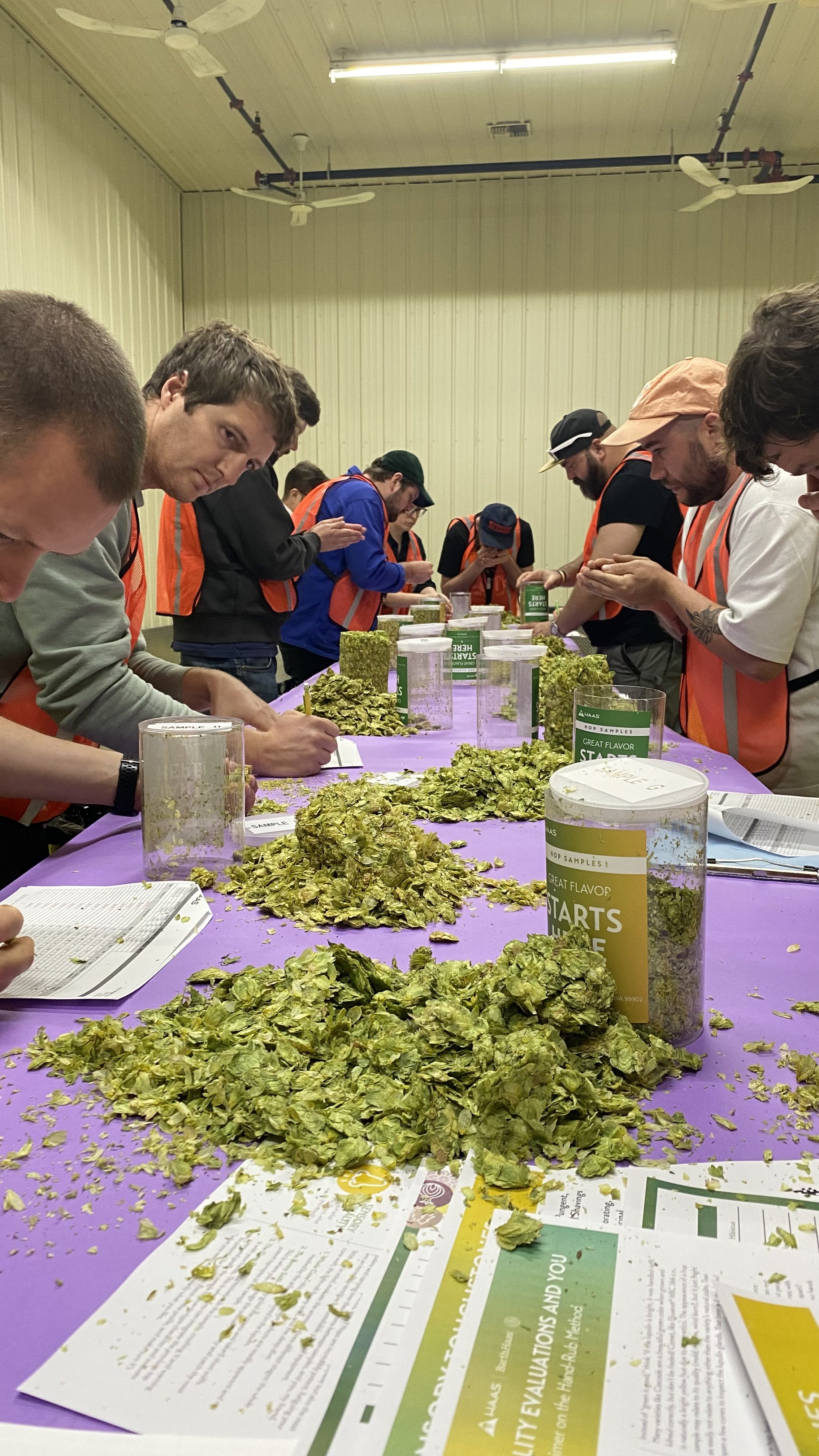Decoding the Aromas: A Comprehensive Guide to Identifying Hops
Welcome, beer lovers, to a journey into the heart of hop appreciation! In this blog post, I'll unravel the complexities of identifying hops, exploring the variability of their scents, the techniques for honing your sensory skills, and the plethora of resources available to aid you on your hop-filled adventures.
Understanding Hop Variability: Environmental and Agricultural Influences
The view across hop fields in the Hallertau, Germany. Differing bands of green denote different varieties.
Hop scents are as diverse as the environments in which they're grown. Factors such as soil composition, climate, and cultivation practices all leave their mark on the final product.
The interplay of climate, geography, and terroir manifests in the dynamic flavours and aromas of hops each year, making them a true reflection of their environment. Climate, with its fluctuations in temperature, rainfall, and sunlight exposure, influences the growth and development of hops. Warmer temperatures might accelerate the maturation process, leading to hops with intensified flavours, while cooler climates could result in a more delicate and nuanced aroma profile. Additionally, rainfall patterns impact soil moisture, affecting the uptake of nutrients by the hops and ultimately shaping their flavour compounds. A dry year might yield hops with concentrated flavours, whereas a wet season could produce more subtly nuanced aromas.
Hop samples are often displayed on purple/blue paper to enhance the green colour and alloow brewers to select the most green samples.
With climate change making the growing year more and more unpredictable, the hop industry is having to cultivate new varieties to combat these changes. Some hops that you know and love may need to be substituted for newer, more robust varieties to keep the same flavours and aromas available. Equally, changing weather conditions can affect the amount of hops that are available. While on a hop tour last August in the Hallertau in Germany, I saw an entire field of hops flattened by a freak storm. It was estimated to be 200,000 Euros worth of damage. Luckily the grower was insured and the variety was being grown by many farms, so overall the impact to the variety was minimal. But some newer or smaller yield varieties could be devastated by this type of incident. This is one of many reasons why it is highly important that hop research groups are working together to create new varieties for brewers, and that these new varieties are embraced by drinkers.
A flattened hop field in the Hallertau, Germany after a freak storm.
Geography plays a pivotal role in hop cultivation, as the unique combination of soil composition, altitude, and proximity to water sources imparts distinct characteristics to the hops grown in different regions. For instance, hops cultivated in nutrient-rich soils tend to exhibit richer, more robust flavours, while those grown at higher altitudes may develop a heightened aromatic complexity due to cooler temperatures and increased UV exposure. Furthermore, proximity to bodies of water moderates temperature extremes, creating microclimates that can influence the overall flavour profile of hops. Terroir, the sum of environmental factors specific to a particular location, encapsulates the essence of a region in its hops, providing a sense of place that is reflected in the diverse array of flavours and aromas expressed year after year. Geographical differences can be seen if you compare American grown Cascade to German grown Cascade. The differences in soil, temperature and regional variations cause deviations in the hop profiles - American Cascade showcases strong grapefruit citrus, floral notes and a hint of spice. The German version tends to be heavy on the spice paired with the grapefruit profile.
Navigating Hop Variety Choices
A selection of hop varieties available to rub and sniff at the Society for Hop Research in Germany.
Speaking of which, with an ever-expanding array of hop varieties hitting the market, brewers and drinkers are spoilt for choice. Using a wide-sweeping brush (as each variety has it’s own nuances), hops from the traditional hop-growing regions have well known characteristics:
European hops (German & Czech) - floral, spicy, perfumy, minty
English hops - earthy, herbal, woodsy,
American hops - pine, citrus, tropical fruits
Pacific hops - Tropical, fruity, citrus
There are then great hops being developed and grown in France, Spain, Italy and Slovenia to name just a few.
There are also 7 recognised primary characteristics of hops:
Floral - geranium, rose, jasmine, lily, lavender
Fruity - apple, berries, peach, melon, passion fruit
Citrus - grapefruit, orange, lemon, lime, bergamot
Vegetal - celery, tomato leaf, green pepper, cabbage
Herbal - tarragon, marjoram, dill, sage
Resinous - pine, juniper, heather, tobacco, woody
Spicy - fennel, black pepper, nutmeg, clove, mint
Inside a hop cone - the yelloe dust is lupulin, which brewers covet.
Brewers select hops from a huge range of choices based on many factors. What style are they brewing? What flavours and aromas do they want to produce? What other ingredients are going to affect flavour and aroma? When will the hops be added? Not to mention commercial and business factors such as what hops do they currently have or are available in time. There are also classic pairings that are tried and tested (Mosaic and Citra anyone?) over trying something new and innovative. Brewing is an art form and hop choices are just another way for brewers to add colour to their creation.
Commercial Hop Selection
Hop samples wrapped and ready for brewers to sample. German Cascade is among the samples.
I’m sure you’ve seen the photos and videos of brewers and beer people rubbing and sniffing hops. Though there are factors in brewing that affect how hop flavour and aroma shows up in beer, this is a great way to find out the aroma in hops.
Baskets of hop debris after a hop rub and sniff.
Why do we rub and sniff hops? For flavour and aroma we want the oils in hops and to release these, so we can smell them, we need to add a bit of heat and friction. There are different ways this can be done. The most traditional way is to rub the hops between your palms. The heat from your hands warms the oils and releases the voilatile aroma compounds. You can do this with hops right off the bine, dried hop cones or pellets. But! You will get dirty hands!
My hand during hop selection - the green is from the oils and resins contained in the hops.
A cleaner way is to split the hop cone down the middle and rub the two halves together. The friction then adds the heat required to the oils. This works best with fresh hops and a bit with dried, but will not work with pellets - they will just disintegrate!
The inside of a US hop.
The third method would be to use a mortar and pestle. Again the friction will release the volatile aroma compounds and you can do this with pellets quite easily.
As a consumer, if you homebrew or have a friend who homebrews, you can have a go at this yourself.
Around hop harvest times, large breweries can do their own hop selections, meaning they choose which bales of hops they receive specifically. You have to be ordering a large quantity of hops to do this, or hop merchants will do this with a selection of customers and select the hops that will be used for the next year with all of their customers.
Hop selection in the US - note the fans on the ceiling and the number of samples!
I had the privilege to attend US hop selection in September 2023 and it was an intense process! The hops are laid out and marked with codes. You may have one sample to evaluate or 14! Each person takes note of what they smell with each sample and rates it. Large breweries would choose which batch of hops they would want. In our case, we averaged the scores of each person at selection and the top rated batch was taken.
Me rubbiing and sniffing samples of US hops during hop selection.
When you are evaluating lots of samples it is easy to become ‘nose blind’ - after a while everything smells the same. At this point, you need to clear your senses and reset. At our selection there was an area to clean your hands (with exfoliant to remove the oils and resins and unscented soap), snacks and drinks and a chill out space. Once you had cleared your senses you could carry on. Then between varieties the room would be cleared of aroma with fans, so as not to cross contaminate samples - see! Intense! But also, a lot of geeky fun!!
Techniques for Identifying and Smelling Hops
Siren currently had a set of single hopped beers where you can guess the hop. Flavours wheels and books and also help you.
So how can you, as a consumer, identify hops in the beers you are drinking? This is a question I get a lot and as noted above, the aroma and flavour of hops can be affected by many brewing choices. It’s a difficult task, to pick out exactly what hops are blended into your beer, but there are some things you can do to make it a bit easier.
I would start by drinking some single hopped beers. Craft breweries often put out beers that they note have only used one hop - that means you will only be picking up the aromas and flavours from that hop. You can use these to understand how you pick up the hop in beer. I use this process and keep notes on my phone for future use:
Pour the beer into a glass so you can properly smell and taste it. Follow my steps for tasting beer that I talk about in this blog post.
Take note of what you smell - you can use terms that relate to food and fragrances to help you with this.
Take note of what you taste - again use food and fragrance words to help you.
Research what the hop should taste and smell like - do you agree? Does this clarify anything you were unsure of?
Pro tip - If you can get some of the hop, you can add to your notes by doing a rub and sniff and seeing if you still get the same aromas from the raw hop.
Resources to help you with your hop research
There are a lot of places that you can find information about hops, but you do need to make sure they are reputable sources. When I’m tasting single hopped beers, I will google the hop, but I will look at a selection of sources to look for overlapping information. Hop merchant websites are a great source - BarthHaas, Charles Faram and Yakima Chief will all have information about hop varieties on their websites. You might even be able to get a product guide that details this information and what beers the hops are best suited for. The British Hop Association is great for UK hop information as well.
Hop sensory wheels can give you a new perspective on the vocabulary you can use to describe what you are tasting. Mark Dredge has a great range here to help you.
There are also books, such as The Hop List by Julian Healy gives you lots of scientific info and which hops can be substituted for each variety. Be aware however, once a book is printed the information can go out of date, so check the published date.
Identifying hops is an art form that requires patience, practice, and a keen sense of smell. By embracing the variability of hop scents, honing your sensory skills, and exploring the wealth of resources available, you'll unlock a world of flavour and aroma that will enrich your beer-drinking experience.
What's your favorite hop-forward beer, and what specific aromas or flavors do you associate with it? Share your thoughts and experiences in the comments below!


